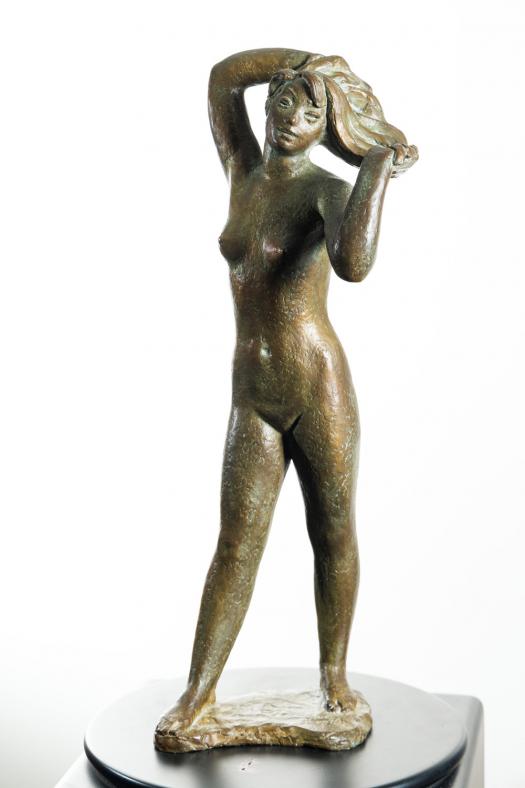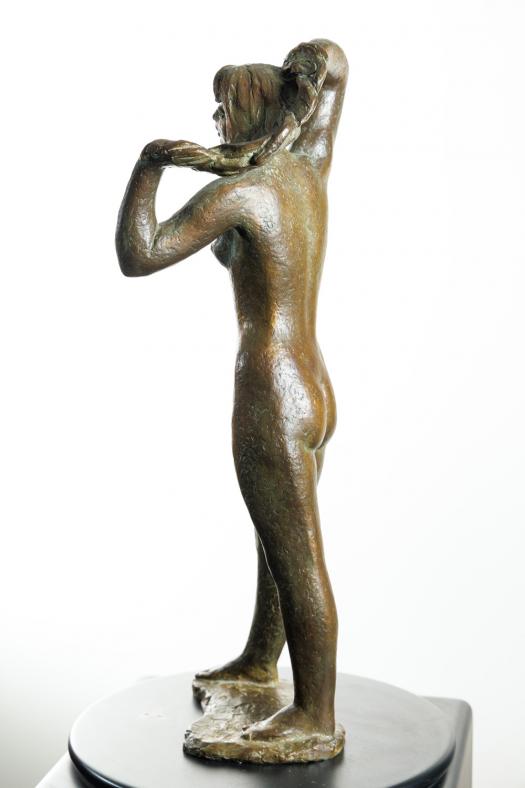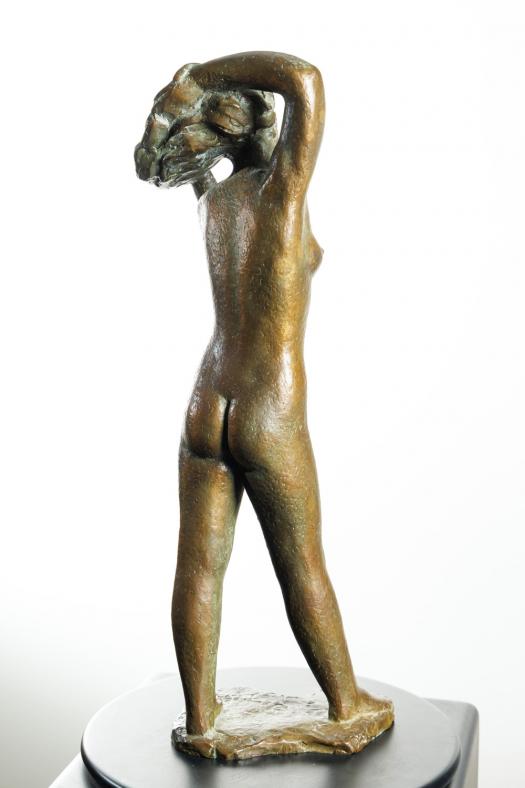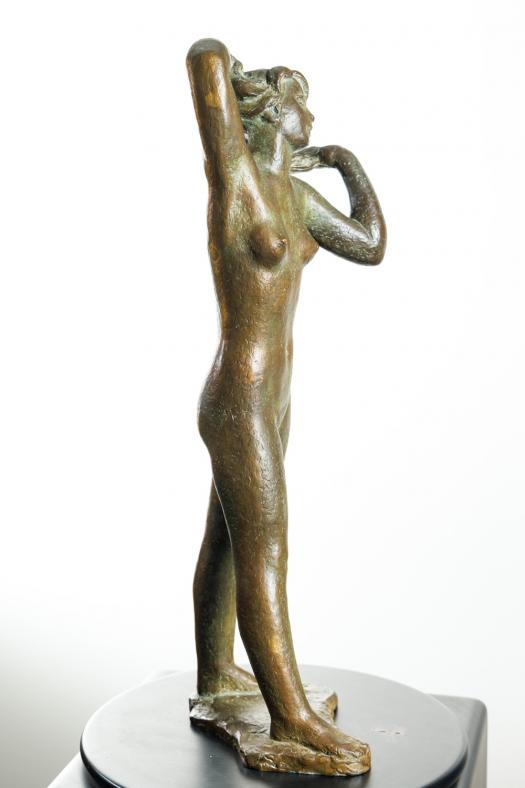Leo Mol - In the Wind
- In the Wind
- Bronze
- 20.5 x 6.75 x 5 in
- 1974
- Price available on request
- Loch Gallery, Toronto
signed and dated '74, numbered 14/15
Leo Mol was born in the Ukrainian village of Polonne in 1915, and as a young man learned to work with clay in his father’s pottery studio. He pursued formal art education at the Leningrad Academy of Arts. When the Germans invaded the Soviet Union in 1941, Mol was deported to Germany, where he studied at the Kunst Academy in Berlin. In 1945 he and his wife, Margareth, fled to The Hague in the Netherlands where Mol furthered his education at the Academy of Arts. In 1948 the Mols had moved to Canada to build a new life.
Mol’s extensive body of work includes finely crafted ceramic figurines depicting Ukrainian themes, religious imagery and wildlife, as well as landscape painting, stained glass windows in churches, and his diverse sculptures in stone and bronze. However, it is the classic portrait sculptures for which Mol achieved an international reputation. His technical skill and his innate ability to capture the essence of his subjects earned him important commissions, including portraits of Queen Elizabeth II, Pope John Paul II, Sir Winston Churchill and Dwight D. Eisenhower. Mol was a member of the Royal Canadian Academy of Arts and was appointed an officer of the Order of Canada in 1989. In 2000, he was made an honorary academician of the Canadian Portrait Academy and received the Order of Manitoba.
Leo Mol’s work can be found in the collections of the Vatican Museum, National Portrait Gallery in Washington, DC, the Art Gallery of Ontario, the McMichael Canadian Art Collection in Kleinburg, Ontario, and the Winnipeg Art Gallery. The Leo Mol Sculpture Garden at Assiniboine Park in Winnipeg was established in 1992 and holds over 300 of his pieces and his original schoolhouse studio. Leo Mol’s career as a sculptor was one of determination and success, and his contribution to the tradition of classical sculpture in Canada is outstanding.
More Artwork from this Artist
Old Homestead
- Pastel on Paper
- 13 x 16 in
- 1989
- Price available on request
Church
- Pastel on Paper
- 16 x 20 in
- 1994
- Price available on request
Barn
- Pastel on Paper
- 16 x 19 in
- 1994
- Price available on request
Sailboats, Gimli
- Oil on Panel
- 12 x 16 in
- 1967
- Price available on request
Dream
- Bronze
- 13.75 x 7.25 x 8 in
- Price available on request
Portrait of Kathy
- Bronze
- 17.5 x 14.5 x 9 in
- 1989
- Price available on request
Ouch
- Bronze
- 11.25 x 8.25 x 7.25 in
- CAD $4200.00
Walking Girl
- Bronze
- 17.75 x 7.75 x 7 in
- 1968
- CAD $4200.00











